Bhutan
Duration: 6 Nights / 7 Days
Thimphu - 2N, Punakha/Wangdue 1N, Paro - 3NDuration: 6 Nights / 7 Days
Thimphu - 2N, Punakha/Wangdue 1N, Paro - 3N(Distance: 65 kms. / Driving Time: 2 hrs. / Altitude of Thimphu: 2,350 mts.)
Meet & Greet on arrival at Paro Airport and transfer to Thimphu (7,710 ft.) the capital city of Bhutan. On arrival check in at the hotel. In the evening, you may choose to relax at the hotel or take a leisure walk (on your own) around the Thimphu City. Overnight stay at Thimphu.
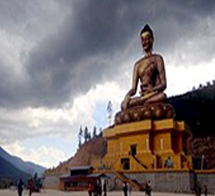
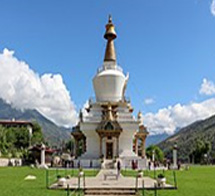
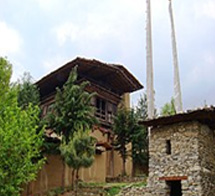
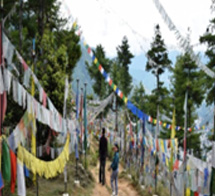
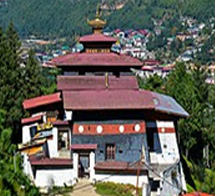
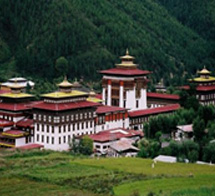
(Altitude of Thimphu: 2350 Mts.)
After breakfast visit the Kuenselphodrang (Buddha Dordenma). Located at a short drive from Thimphu City Centre, Kuenselphodrang offers a good overview of the Thimphu valley. The largest statue of Buddha in the country sits here which houses over one hundred thousand smaller Buddha statues. Then visit the National Memorial Chorten built in the memory of the Third King of Bhutan and visit the Folk Heritage Museum. Afternoon visit Sangaygang View Point. The Lookout point offers a stunning panoramic view of the entire Thimphu. On the way back visit the Takin Preserve Centre. Takin is the National animal of Bhutan. Then visit the Changangkha Lhakhang. This is a popular Buddhist temple and is especially visited by parents to receive blessings for their new-born. Its interiors are full of murals that depict different stories. In the evening, visit the Tashichho Dzong, first built in 1216 A.D. by Lama Gyalwa Lhanangpa. The Dzong is the seat of the National Government and the Central Monastic Body, including the summer residence of the Je Khenpo (Chief Abbot of Bhutan). Overnight stay at Thimphu.
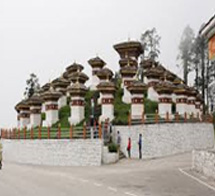
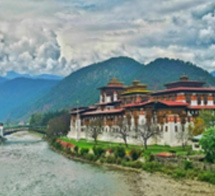
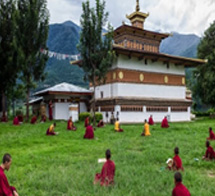
(Distance: 77 kms. / Driving Time: 2 hrs. / Altitude of Punakha: 1,310 mts.)
After breakfast drive to Punakha/Wangdue (4298 ft.), on the way Stop at Dochu-La-Pass (10334 ft.) to view the higher Himalayas. The pass is approximately 25 kms away from Thimphu and is the highest point between the Thimphu and Punakha/Wangdue Valley. Another attraction is the 108 chorten/stupas (Druk Wangyel Chortens) built close to each other surrounded by numerous colorful prayer flags. On arrival at Punakha, check in at the hotel. Afternoon, visit Punakha Dzong - built in 1637 by Zhabdrung Ngawang Namgyal. For many years until the time of the second king, it served as the seat of the Government. The Dzong was named Druk Pungthang Dechen Phodrang (Palace of Great Happiness). Punakha is still the winter residence of Je-Khenpo and King Jigme Dorji Wangchuck convened the first National Assembly here in 1952. After that take a short and easy hike to visit the Chhimi Lhakhang - The Temple, also known as “The Temple of Fertility” was built by Lama Drukpa Kuenley, “The Devine Mad Man”. Evening free for leisure. Overnight stay at Punakha / Wangdue.
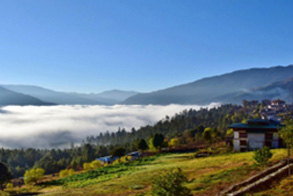
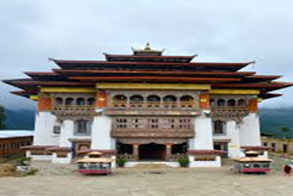
(Excursion to Gangtey - Distance: 78 kms. One way / Driving Time: 3 hrs.)
After breakfast, start for full day excursion trip to Gangtey Valley (9,842 ft.). On the way you shall come across different flora and fauna, monuments, villages and people. Stop at places for sightseeing and photography. While in Gangtey visit the Gangtey Goemba the only Nyingmapa monastery in western Bhutan, which was established in the 17th century. Then explore the Phobjikha valley, one of the most beautiful glacial valleys in the Himalayas and the winter roosting place for the endangered Black necked Cranes which migrates from the arid plains of Tibet in the north. You may choose to hike around the Valley. After visiting the valley drive back to Punakha. Overnight stay at Punakha / Wangdue.
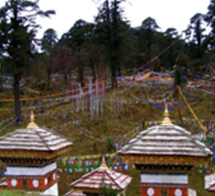
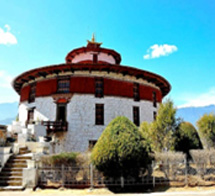
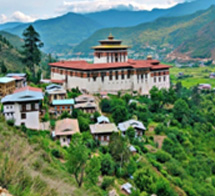
(Distance: 125 Kms. / Driving Time: 5 Hrs. / Altitude of Paro: 2,280 Mts.)
After breakfast drive to Paro (7,483 ft.). On the way stop at Lamperi to visit Royal Botanical Park. This park is a treat for nature lovers as the 36 species of exotic rhododendron and approximately 220 types of charming birds will make your day unforgettable. On arrival check in at the hotel. Afternoon visit Ta Dzong - National Museum with an excellent collection of arts, relics, religious thangkha, etc. Then visit the Rinpung Dzong - Meaning "fortress of the heap of jewels". The dzong now serves as the administrative and judicial seat of Paro. Rest of the evening at leisure. Overnight stay at Paro.
(Distance: 40 Kms. / Driving Time: 1.5 Hrs.)
After breakfast, drive to the base of the abode of gods and monks, the Taktshang Monastery. The monastery is a 2 -3 hours hike uphill from here. One feels truly blessed reaching the monastery. The primary Lhakhang was built surrounding Guru Rinpoche’s Meditation cave in 1684 which clings to the edge of a sheer Rock cliff that plunges 900 meters into the valley below. Legend has it that Guru Rinpoche flew here on the back of a tigress which gives its name “Taktshang” meaning Tiger’s nest. Afternoon (If time permits), visit the Drukgyel Dzong. Built in 1647, the dzong was destroyed by accidental fire and left in ruins as an evocative reminder of the great victories it was built to commemorate. Explore the ramparts and experience an unforgettable view of Mt. Jhomolhari (7,314 m). On the way back, visit Kichu Lhakhang, one of the oldest Buddhist temples in Bhutan. Overnight stay at Paro.
After breakfast check out from hotel and drive to Paro Airport as per your flight timing (Only transfers).

We are in Travel and Tour Business for more than two Decade under the name and style : SIVADAS TRAVEL
6, Kapadia Chambers, 599, J.S.S. Road,
Mumbai - 400 002
Copyright © Sivadas Travel. All Rights Reserved.
Website Designed by Web-Mantra